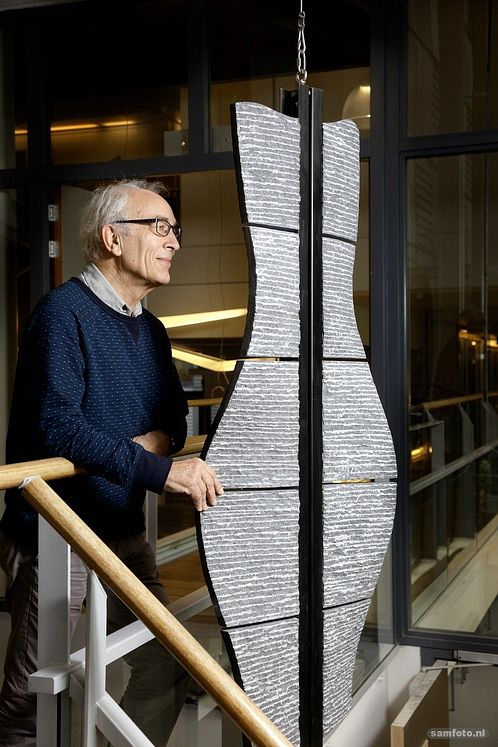Just two years after becoming a professor, Dr. Gijs van Kuik realised he was working too hard. In an effort to maintain balance in his life, he enrolled in a sculpture class.
“After the first blow of the hammer I knew it was for me,” said the recently retired professor from wind energy at the Faculty of Aerospace Engineering.
After experimenting with all types of stones available to amateurs he learned that he liked working best with the hard ones. As Van Kuik sees it there are different ways to find your own sculpture. He noted that many people like to be inspired by the stone itself, but not him. “Maybe it’s my engineering background,” he said. “Usually I have a rough idea and sometimes I even make drawings before I begin.”
Although sculpting uses a totally different part of the brain than academia, Van Kuik said that it is complementary to work with your hands. And for him academia and his art do share some things in common. “When I have a good work that is a contribution to science, I also want it to be beautiful,” he said.
In retirement, in addition to reading more and visiting museums and the theatre, Van Kuik plans to do more sculpting. “It is extremely slow work, slow art and very physical,” he said. “But at the same time you are continuously triggering your brain.”



Comments are closed.